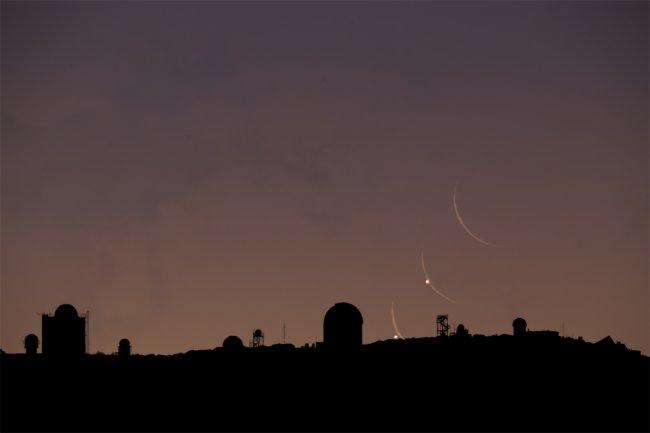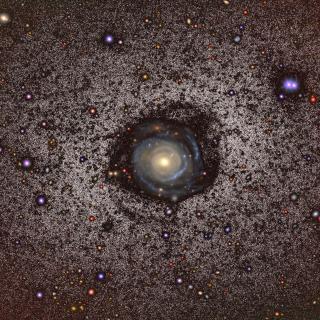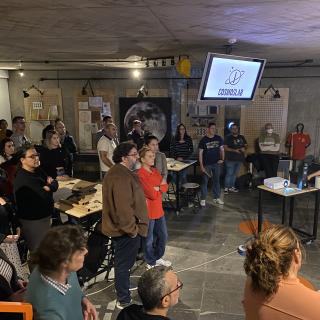This morning before dawn, Venus “hid” behind the Moon for about an hour as seen from the Canaries. The occultation began, in the islands, at 07:27:23 local time (an hour later in the Peninsula) and not until 08:28:01 did it reappear on to the right of the lunar disc.
The Teide Observatory, at Izaña (Tenerife), was a privileged place to enjoy the occultation due to its clear, virtually cloudless sky. A team from the Instituto de Astrofísica de Canarias (IAC), comprising the astrophysicist and popularizer Alfred Rosenberg and the astronomical photographer Daniél López, went up to the observatory to follow the occulatation. Only 2% of the Moon was lit (it was in the waning phase) and Venus, only 3º 26’ above the horizon, had 96% of its disc illuminated.
An occultation occurs when two celestial bodies are aligned, and the nearer one, which looks bigger to us, covers the one which is farther from us. On this occasion, because of the Moon’s size and its relative proximity to the Earth, only 356,000 km compared with the distance to Venus of 244 million km at the time of the occultation, the Moon’s occultation of Venus was visible from only a limited part of the Earth’s surface: Europe and parts of Africa and Asia. Countries to the far north, such as Iceland, and to the south such as the Congo, did not experience an occultation as the Moon passed above or below Venus. As the occultation occurred during daylight, almost everywhere except for the “Fortunate Isles” (the Canaries) it was much harder to see elsewhere.
Videos:
Video 1: a time lapse taken at 4.5 km from the Teide Observatory, to find the appropriate line of sight to show it, and also the occultation of Venus, using a 600mm objective. The real duration of the sequence is 5 minutes, compressed into 15 seconds
https://www.youtube.com/watch?v=QTyEMVvlfuM
Video 2: a detail of video 1.
https://www.youtube.com/watch?v=mQtHBE5IjyE
Video 3: a sequence at the moment of occultation (it took 19 seconds for the Moon to occult the complete planet Venus in real time as seen from the Canaries). Image taken with a telescope of 20 cm aperture and 1,800 mm focal length. The powerful effect of the atmosphere on an object only 3 degrees above the horizon causes the image to be of rather poor quality.



